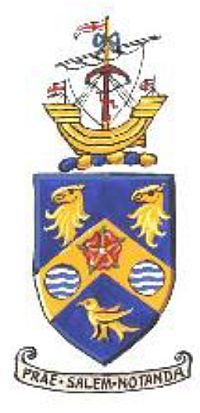Knott End, Preesall and the lower end of Pilling Marsh (Pilling Lane) form the township of Preesall-with-Hackensall, situated on the east bank of the River Wyre where the river ends its journey from the Forest of Bowland to the sea at Morecambe Bay.
There has been some occupation of the area for centuries, probably from middle Stone Age times and most certainly from early Bronze Age, and it is known that the Romans passed through the area. Hackensall and Knott End have Norse roots while the name Preesall is Celtic in origin. A minor Viking/Norse warrior chieftain named Haakon came ashore in the river estuary and settled in the area, thereby giving us the name of Hakensall. Preesall is mentioned in the Domesday Book compiled in 1086. At the time of the first census in 1801 the population of the township was 530, the majority of whom were engaged in occupations relating to the sea, river and land such as cockle gathering, fishing, running the ferryboat and farming.
Industry came to the area in 1872 when a series of trial borings were made in the hope of discovering iron ore. Instead rock salt was found in quantity and serious exploitation began in 1875. The salt was pumped to the surface in the form of brine and piped across the river to Burn Naze, where the Fleetwood Salt Company converted the liquid brine into salt. Subsidence fears led to the development of a salt mine proper with rock salt being extracted by miners using special undercutting machines. Some of the salt was discovered to be of a very superior quality and became world famous at the time.
By 1900 3,500 tons of rock salt were being extracted every week and by 1906 production peaked at 140,000 tons, making it the biggest salt producer in Britain. The salt was loaded into hoppers, each containing a ton and a half, and taken on tracks to a jetty on the river. It was then loaded on to steamers that carried 16,000 tons for export all over the world. Extraction continued until 1920 when problems began to occur with water leaking into the workings and they were abandoned in 1930. Four years later a five-acre expanse of ground vanished overnight into an underground reservoir of brine.
Further brine extraction continued up to the 1990s with the brine being pumped across the river to be used in the production of PVC at the ICI Hillhouse site. The Preesall salt seam is now the site of plans by Halite energy to store large amounts of gas in specially created caverns.
The Local Government Act of 1894 set up the Preesall Urban District Council, which controlled the affairs of the township until another reorganisation in 1974 passed this control to the newly constituted Wyre Borough Council. In order to maintain a local focus Preesall Town Council was established in the same year.
It is not clear how Knott End got its name. One theory is that the "knotts" were two large mounds of stones which lay out in the river until they were destroyed in the construction of the entrance to the Wyre Dock. Others believe that the name may have been derived from the "knot", a bird that frequents the sands of Morecambe Bay on which Knott End is situated. Another thought is that, when entering the estuary, the early Norse seafarers used knotted ropes as navigational tools - the knots marking distance with Knott End being at the end of the rope.
The Armorial Bearings of Preesall

ARMS: Azure on a Chevron between in chief two Griffin's Heads erased and in base a Martlet or a Rose Gules barbed and seeded proper between two Fountains.
CREST: On a Wreath of the Colours an ancient Galley sails furled Or with Pennons of St. George and pendent from the mast-head by a Knot Azure a Cross-Bow Gules.
Motto 'PRAE SALEM NOTANDA' - Famed for salt or the well-known place by the sea.
The Coat of Arms was granted on the 2nd June 1950.
The chevron and griffins' heads are from the arms of the Elletson family of Parrox Hall and the Martlet is from the arms of the Fleetwood family of Hackinsall Hall. The rose refers to the County, and the fountains allude to the Fairy Well and the salt or brine workings.
The ship indicates the maritime associations of the district, including its ancient fisheries and ferry. The knot stands for Knott End, and the cross-bow (or arbalest) is for Geoffrey l'Arbalestier, who received the Manor of Preesall and Hackinsall in 1190, and was the ancestor of local families.
The motto comprises a play on the name. The arms are the main feature of the Councils' Chains of Office.
Laurence Stephen Lowry 1887 - 1976
A famous visitor to the village, L.S. Lowry, painted various views of Knott End in his well-known 'Matchstalk Cats and Dogs' style. Lowry frequently visited the area in the 1940s and 1950s and produced a number of sketches/paintings depicting scenes across the River Wyre towards Fleetwood.
In recognition of the artist's connection with the area, a sculpture in his honour was erected on the seafront at Knott End (near the ferry slipway) where Lowry is known to have stood and sketched.